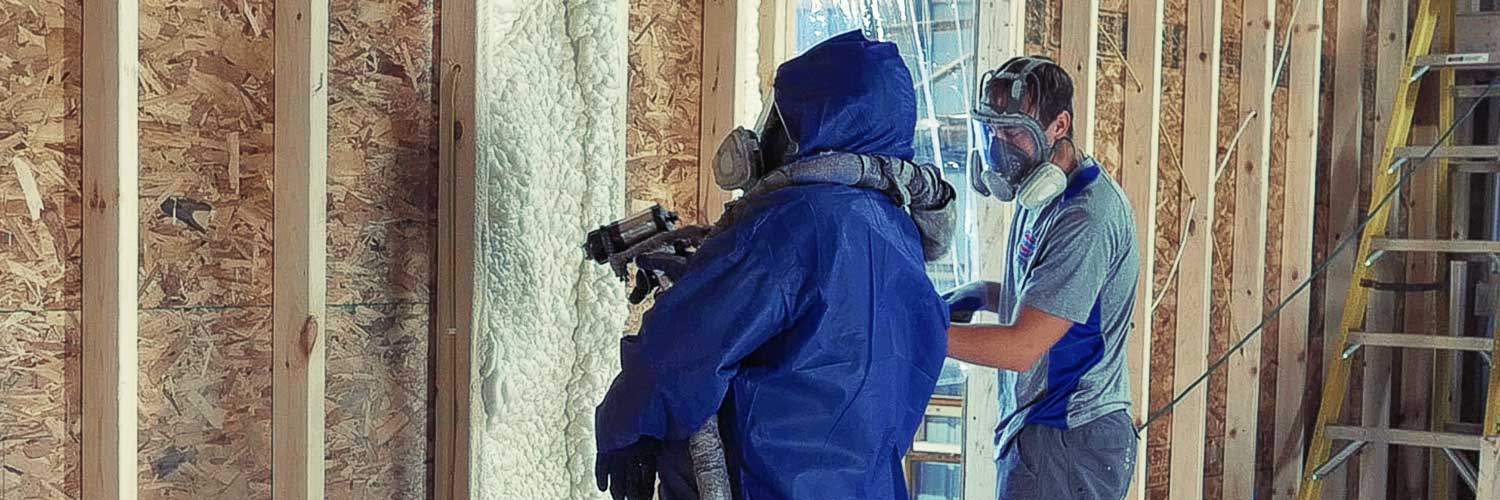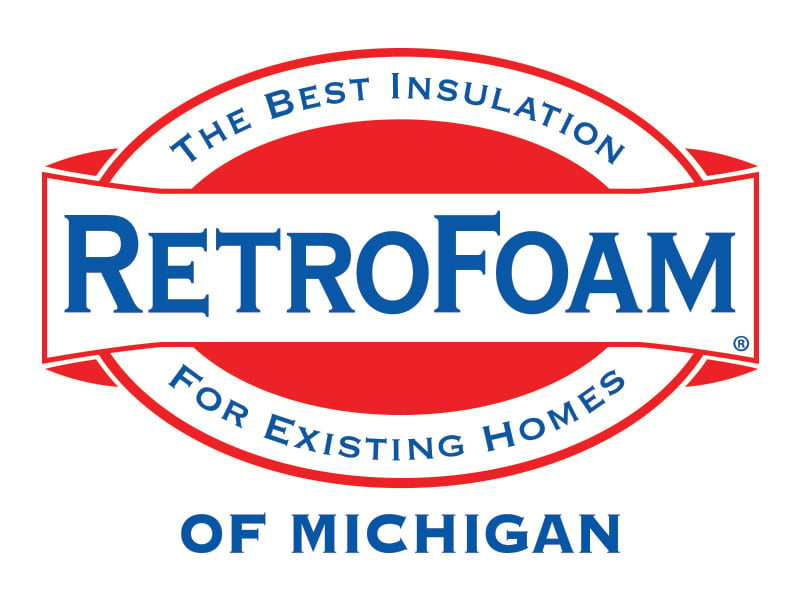Spray Foam Insulation for New Build Homes: Answers to Frequently Asked Questions


When planning your new home, insulation is one of the most important decisions you'll make.
With so many options available, you may have questions about installation, cost, and performance. Were do you turn for reliable answers?
Answers to the Most Common Questions About Spray Foam Insulation in New Home Construction
At RetroFoam of Michigan, we have been installing spray foam insulation for new home construction for over two decades throughout the Lower Peninsula.
Homeowners and builders often ask similar questions, so we've compiled the most common inquiries along with the answers you need to make an informed decision.
How Much More Does Spray Foam Insulation Cost Compared to Fiberglass and Other Traditional Insulation Materials?
Spray foam insulation typically costs two to three times more than traditional insulation materials like fiberglass or cellulose.
While the upfront investment is higher, spray foam insulation creates an air seal that significantly reduces monthly energy costs and eliminates future insulation replacement expenses. This makes it a cost-effective solution in the long run. Additionally, materials like fiberglass and cellulose tend to settle over time, leading to a decline in performance and requiring costly replacement.
READ MORE: Is the Up-Front Cost of Spray Foam Insulation Worth it When Building a New Home?
Does Spray Foam Insulation Pass Building Code Requirements?
Yes, spray foam insulation meets code requirements.
Traditional insulation is evaluated based on R-Value, a prescriptive measure. Spray foam, on the other hand, meets performance-based standards because of its superior ability to create an air barrier that enhances energy efficiency.
READ MORE: How to Pass Code Without Meeting Prescriptive R-Value
Should I Use Open Cell or Closed Cell Spray Foam in My New Build Home?
For residential new home construction, open cell spray foam is typically the better choice.
As new homes settle over time, open cell foam is flexible enough to move with the structure without cracking. Closed cell foam, which is more rigid and dense, is best suited for pole barns and commercial buildings.
Both types create an effective air seal to improve energy efficiency and comfort.
READ MORE: Open Cell vs Closed Cell Foam Insulation: Which is Better for My Home?
Will My Home Be Too Airtight with Spray Foam Insulation?
This is a common misconception.
A properly designed HVAC system ensures your home will have balanced air quality and humidity. Spray foam insulation enhances energy efficiency without compromising indoor air quality when the ventilation system is appropriately installed.
READ MORE: Can Spray Foam Make My House Too Tight?
How Much Can I Save on Energy Bills with Spray Foam Insulation?
Homeowners report energy savings ranging from 15 to 50 percent per month.
Factors like home design, thermostat settings, and lifestyle choices affect these savings. The longer you stay in your home, the greater the financial benefits of spray foam insulation.
READ MORE: 5 Common Comfort and Energy Bill Savings According to RetroFoam of Michigan Reviews
What is the Average Cost of Spray Foam Insulation for New Home Construction?
The cost of spray foam insulation depends on the size and complexity of your home.
For an average-sized home (2,000 to 2,500 square feet), the price typically ranges between $12,300 and $25,800. Homes with simple layouts are easier and more affordable to insulate, while complex structures may cost more.
READ MORE: How Much Does Spray Foam Insulation Cost When Building a New Home?
Is Flash and Batt Insulation a Good Option?
Flash and batt insulation combines a thin layer of closed cell spray foam with fiberglass batts.
While some contractors recommend this to cut costs, we advise against it due to potential performance issues that could compromise energy efficiency.
READ MORE: Flash and Batt Insulation Problems: 4 Issues You Want to Avoid
How Long Does a Spray Foam Insulation Install Take?
The installation timeline depends on scheduling with other contractors.
Once on-site, our crews can complete the insulation process -- attic to basement -- within one to two days, depending on the home's size.
READ MORE: RetroFoam of Michigan's Process from Estimate to Install
What Is Your Minimum Charge for a Spray Foam Install?
RetroFoam of Michigan has a minimum charge of $2,000, which varies based on project specifics and the type of foam insulation used.
READ MORE: Why Do Spray Foam Insulation Contractors Have a Minimum Charge?
Can I Use Spray Foam in My Cathedral Ceiling?
Yes, spray foam insulation is an excellent option for cathedral ceilings.
Applying foam before the ceiling is enclosed helps prevent heat loss in the winter and keeps your home cooler in the summer by sealing the attic envelope.
READ MORE: What is the Best Insulation for a Cathedral Ceiling?
Can Spray Foam Be Applied to the Roof Deck?
Yes! Insulating the roof deck with spray foam helps maximize energy efficiency and allows the attic to be used for storage or other purposes.
READ MORE: Spray Foam Attic Floor or Rafters: Which is Best to Insulate?
Can I Insulate Interior Walls with Spray Foam to Reduce Noise?
Absolutely.
Open cell spray foam can reduce sound transmission by up to 80 percent, significantly dampening noise between rooms.
READ MORE: Soundproofing vs Sound Dampening a Room: What’s the Difference?
Will Spray Foam Be Applied Around Windows and Doors?
At RetroFoam of Michigan, we provide this service at no additional cost when insulating new construction homes.
Sealing around windows and doors prevents air leaks and improves overall home comfort.
READ MORE: What is the Best Insulation Around Windows? (Spray Foam vs Fiberglass)
If a New Build Home Has Corner Gaps, Will They Be Filled?
It depends on the insulation contractor, but a good contractor will fill those corner gaps using spray foam.
We don’t want to leave any areas open where the outside air can sneak it.
What Happens If I Need to Rewire My Home After Spray Foam is Installed?
Open cell spray foam is pliable enough to allow wires to be run through it if necessary.
While rewiring should ideally be planned before installation, modifications can still be made if needed.
READ MORE: How to Snake a Wire Through a Wall with Insulation
Is it Safe to Spray Foam Over Electrical Wires and Plumbing?
Yes.
Spray Foam insulation keeps electrical wires secure and doesn't cause corrosion. It also helps protect plumbing from extreme temperature fluctuations.
Learn More About Spray Foam Insulation for New Build Homes
You can learn even more in your foam insulation journey by checking out the Learning Center on our website.
You can also check out our Ultimate Foam Insulation Buying Guide for New Build Homes to learn more specifically about meeting code, the best options for your new home, and more.
Key Points:
- Superior Air Seal: Unlike traditional insulation, spray foam eliminates air leaks, improving energy efficiency.
- Long-Term Savings: Although more expensive upfront, spray foam insulation leads to significant energy cost reductions over time.
- Flexible and Durable: Open cell spray foam moves with your home's natural settling, preventing gaps or cracks.
- Meets Code Requirements: Spray foam insulation meets performance-based building codes for new home construction.
- Comfort and Noise Reduction: Spray foam minimizes drafts, regulates indoor temperature, and dampens sound.
- Quick Installation: Most projects are completed in one to two days, depending on home size.
- Safe for Electrical and Plumbing: Spray foam can be applied over wires and pipes without issues.
Related Articles
Michigan Insulation Code: New Home Insulation Requirements
What to Consider When Building an Energy Efficient Home
6 Tips to Get on the Same Page with Your Building Code Inspector During New Home Construction
About Amanda Emery
Amanda previously has worked as a breaking news and crime reporter, TV news producer, and editor in Flint and Detroit. Throughout her career as a journalist, she has won several awards from The Society of Professional Journalists - Detroit Chapter and the Michigan Press Association. As part of the RetroFoam of Michigan family, Amanda uses her experience as a journalist to write content that will help educate homeowners on the benefits of foam insulation. When Amanda isn’t writing, she’s spending time with her husband and rescued huskies. She also loves knitting, making art, cooking, and hosting dinner and a movie night for friends and family.



